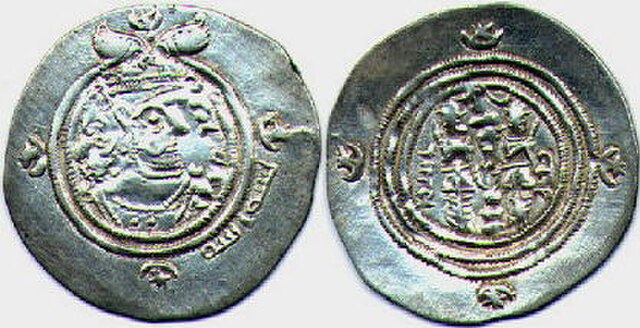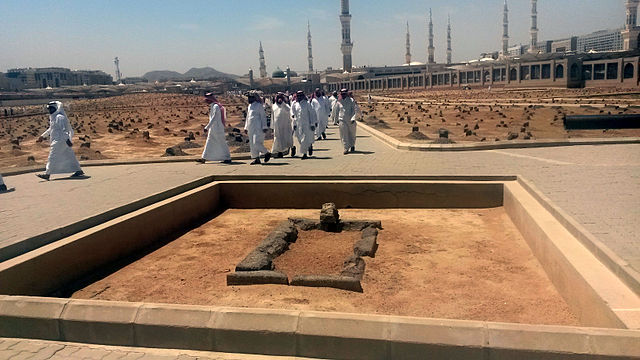Muslim conquest of the Maghreb
The Muslim conquest of the Maghreb or Arab conquest of the Maghreb by the Rashidun and Umayyad Caliphates commenced in 647 and concluded in 709, when the Byzantine Empire lost its last remaining strongholds to Caliph Al-Walid I. The North African campaigns were part of the century of rapid early Muslim conquests.
Roman Theatre at Leptis Magna
The Arab conqueror and general Uqba Ibn Nafi founded the Great Mosque of Kairouan (also known as the Mosque of Uqba)—the oldest and most important mosque in North Africa,—in Kairouan, Tunisia, 670 AD.
Prayer hall of the main mosque of Kairouan, with columns taken from former churches – arguably from Carthage.
Uthman ibn Affan was the third caliph, ruling from 644 until his assassination in 656. Uthman, a second cousin, son-in-law, and notable companion of the Islamic prophet Muhammad, played a major role in early Islamic history. During his reign as caliph, he was known for ordering the official compilation of the standardized version of the Quran that is still being used today.
Calligraphic seal featuring Uthman's name, on display in the Hagia Sophia
Arab-Sasanian coinage during Uthman used Sassanid symbols (star and crescent, fire temple, the picture of the last emperor Khosrau II) by adding Bismillah in Arabic on margin, instead of designing a new one.
Uthman's tomb after demolition by Saudi Arabia






